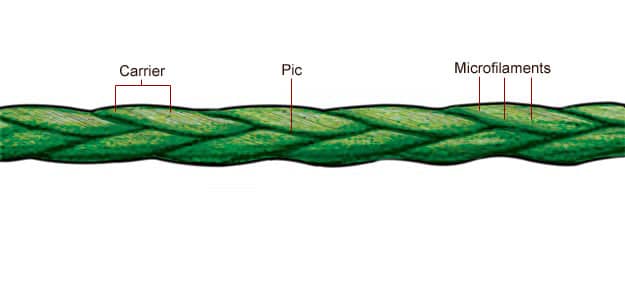A Look Inside
A braid’s anatomy is really quite simple. Polyethylene microfilaments are gel-spun to create either Dyneema or Spectra carriers. These carriers are then woven together, forming what’s known as a pic at points where they intersect.

Illustration by David Shepherd
Common Braid Terms
Standard Braid — Any of the typical, woven products. Standard braids are best used on conventional reels.
Fused Braid — A braid with a core that has been molecularly altered and fused, primarily through heat. Fused braids, more supple than standard braids, are best used on spinning reels.
Hollow-Core Braid — A woven braid with a hollow core. Anglers insert monofilament or fluorocarbon line into the core to create leader connections.
Polyethylene — A synthetic thermoplastic that serves as the foundation of braid. The tiny strands of polyethylene that form a strand of Dyneema or Spectra are called “microfilaments.”
Gel-Spinning — The process by which polyethylene is spun into strands of Dyneema or Spectra.
Dyneema — A gel-spun product produced and sold to line manufacturers by DSM, a Dutch chemical and pharmaceutical company.
Spectra — A gel-spun product produced and sold to line manufacturers by New Jersey-based Honeywell International Inc.
Carrier — The common name used to describe a strand of Dyneema or Spectra. A braid is often categorized as an “8-carrier braid,” or equivalent.
Pic — An intersecting point where one carrier crosses over another.
Pics per Inch (PPI) — The number of pics per inch of braid. The higher the PPI, the smoother the braid; but too high a pic count will generally reduce strength and abrasion resistance.








